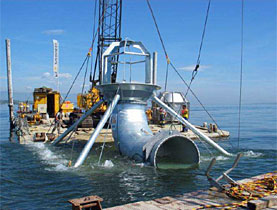Crumbling Palais des Nations needs urgent work

Geneva's Palais des Nations, the European headquarters of the United Nations, is in bad shape and needs urgent repairs, say UN officials.
The grandiose exterior of the 80-year-old building – originally constructed to house the League of Nations – hides miles of leaky and rusted pipes, outdated wiring and draughty windows.
It also suffers frequent floods, according to the head of the Geneva complex. The repairs could cost more than $1 billion (SFr1.16 billion).
The majority of the infrastructure problems at the Palais des Nations are not visible to the naked eye and much of the building’s internal systems will need to be replaced, the UN Director-General Sergei Ordzhonikidze told journalists last week.
“Most of the electrical installations, wiring, pipes, sanitation and windows in the old building have passed their life span,” said Ordzhonikidze. “Many of the materials used are not durable and are disintegrating.”
The Palais des Nations’ oldest section was built between 1929 and 1938, with annexes added in 1952 and 1973. Geneva’s UN headquarters attracts some 100,000 tourists and hosts more than 11,000 meetings a year.
According to a report by the “Group of Friends of the Palais des Nations”, which comprises around 30 member states, around 100 kilometres of electric cabling in the old building need to be replaced to conform to modern standards.
Concrete has cracked in many places and there is a danger of concrete breaking off from the roof and falling. Some meeting rooms are dilapidated, it said.
The report said the complex has 200 kilometres of pipes, at least 40 kilometres of which are rusting and need to be replaced. Replacing 1,680 windows alone will cost $18 million, it added.
“The building won’t collapse, but the longer we wait the more expensive the renovations become,” Ordzhonikidze told swissinfo.
$1 billion price tag?
The director-general refused to give a price tag but last year he told Reuters that the work in Geneva could cost more than $1 billion.
The Swiss government has donated $150,000 for an initial study of the building’s renovation needs in 2009. This will be followed by a more detailed study to decide what needs to be replaced and what can be left alone, after which a funding request could be sent to the UN’s 192 member states.
But any upgrade would not start until the $2-billion work to renovate the UN’s main New York headquarters ends in 2013.
“Architecturally the Palais des Nations is highly significant and of great historical and cultural value, perhaps maybe more than the New York headquarters,” said project manager Michael Adlerstein, who also helped oversee the restoration of the Ellis Island Museum and Statue of Liberty. “But it’s a far more complicated project.”
It’s important to start thinking about renovations now, he said, especially as the financing will be a lengthy discussion with the member states. “For the New York headquarters the first studies were carried out in 1998 and work only started ten years later.”
Adlerstein hopes the Geneva renovations will save as much energy as in New York, where insulation and solar panels will lead to a 44-per-cent drop in energy consumption.
“Many of the needs in Geneva are urgent, as they are wasting energy and could be saving the UN operational funds and provide a more efficient operation, but it needs to go through an orderly discussion to secure the necessary funds,” he told swissinfo.
swissinfo, Simon Bradley in Geneva
Geneva is home to the headquarters of 22 international organisations, such as the World Health Organization, the World Trade Organization and International Committee of the Red Cross.
The city is the European seat of the United Nations.
“International Geneva”, as it is known, is worth around SFr5 billion ($4.3 billion) a year to the canton.
In all some 40,000 international diplomats and civil servants are based in Geneva; in addition there are around 2,400 staff working for non-governmental organisations.
Around 8,500 staff work for the United Nations family in Geneva, which is the largest concentration of UN personnel in the world.
Geneva’s international role is not new; following the First World War it became home to the League of Nations and the International Labour Organisation.
The sprawling Palais des Nations has 157,348 square metres of floor space set in a park of 46.6 hectares (111 acres). It has 34 conference rooms used for meetings of human rights, disarmament and other bodies.
A team of 90 men and women with expertise in some 20 different professional areas such as architecture, engineering, draughtsmanship, electricity, mechanics, painting, building or upholstery work to maintain the Palais des Nations in prime condition.
Last year controversy erupted over a reported €20 million (SFr30.2 million), donated by Spain to refurbish one of the Palais des Nations’ meeting rooms with an ornate ceiling painted by Spanish artist Miquel Barcelo as a gift to the UN.

In compliance with the JTI standards
More: SWI swissinfo.ch certified by the Journalism Trust Initiative













You can find an overview of ongoing debates with our journalists here . Please join us!
If you want to start a conversation about a topic raised in this article or want to report factual errors, email us at english@swissinfo.ch.